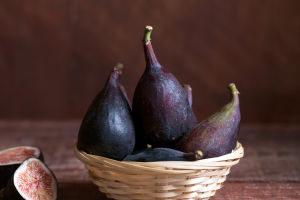In northwestern Tibet, where the average altitude is over 4,500 meters, there is a kind of divine beast that seems to have fallen into the mortal world.
They are the golden yaks, which are called "golden beasts".
Golden yaks had previously existed in the legends of Tibetans, and almost no one had ever seen them.
It was not until more than 30 years ago that zoologists explored the golden yaks after a herder saw them.
In 1988, a very small number of golden yaks were finally found in the Qiangtang region, and the zoologists named them the golden yaks.
As the golden yak is currently found only in the Qiangtang National Nature Reserve in Ali, Tibet, China.
Its number is extremely rare, according to the number of observations, with less than 300 heads in the world.
Therefore it is difficult to see at all in normal times.
The golden yak lives among glaciers at an altitude of about 5,000 meters.
Here, the temperature at night can drop to -40°C.
In order to be able to withstand the cold, their fur is thicker than that of domestic yaks, especially since the fur on the belly and chest is longer.
At high altitudes, the air is very thin and the oxygen content is obviously not enough for many animals to survive.
The golden yak, however, adapts to such an environment by keeping even its trachea shorter as a way to ensure normal breathing.
The cells in the golden yak are also smaller in size.
This results in a greater amount per unit volume in the blood and a higher oxygen-carrying capacity, several times that of a domesticated yak.
In the glacial environment, the terrain is very severe, but the golden yak can use its four sturdy hooves to walk in steep places as smoothly as possible.
Their legs are so thick and short that their hoof armor is small, and they have an extremely flexible cuticle on their hoof armor.
It can be used to slow down the impact and increase the adhesion of the ground.
The golden yak also has a powerful tongue that not only dissipates heat after a long hike but also grows thick barbs.
This is because, on highland glaciers, desert plants such as mosses and sedges grow short and hard.
And these barbed tongues make it easier for them to feed.
The golden yak is also a herd animal, but they are very cautious and sensitive to unfamiliar things.
In a herd, there are a few strong males to protect them. Once they smell danger, the males will rush out and repel the enemy.
The golden yaks live on the plateau glacier at about 5,000 meters all year round, where poachers usually find it difficult to poach them.
Besides poachers, what may threaten the golden yaks are the Himalayan wolves living on the plateau.
Usually, wolves do not dare to go after adult yaks but will turn their targets into small golden yaks.
But with the threat of wolves to domesticated cattle, humans have cracked down on wolves on the Tibetan plateau and their numbers have been reduced a lot.
And the most important thing to note is actually the change in the climate. Because the golden yak has always lived on the glaciers, it has long adapted to the extreme cold.
But in recent years, the global temperature has been rising and many glaciers have melted.
Therefore, human conservation of the golden yak should focus on the protection of its habitat.
Because once the glaciers are gone, the golden yak may not be able to find suitable habitats to survive and reproduce.


